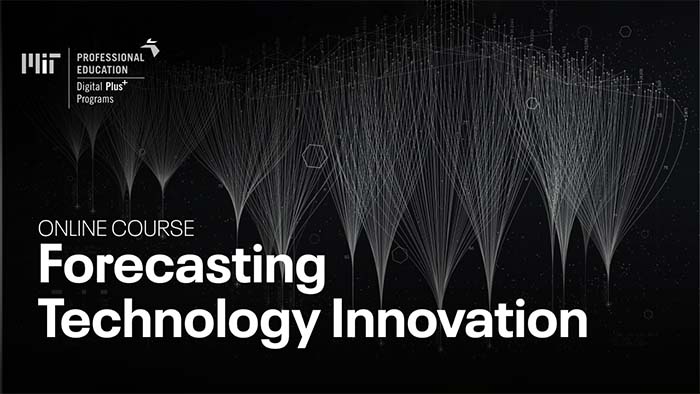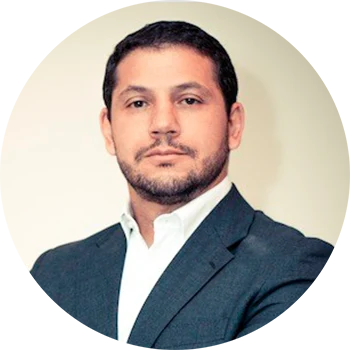Leveraging data-based decisions for a competitive advantage
Decision-makers who are skilled at forecasting technology innovation have a competitive advantage. By gaining knowledge in forecasting technology, you can provide businesses with up-to-date data and analytical insights that can inform decision-making. Explore analytics tools to help companies analyze past trends and accurately predict future trends, allowing them to make more informed decisions.
MIT Professional Education’s online course Forecasting Technology Innovation: Using Data for Strategic Advantage explores the data-informed process of measuring, predicting, and influencing technological innovation.
$103 billion
is projected to be big data’s worth by the end of 2023.
Source: (Entrepreneur, 2021)
90%
of IT professionals plan intend to up their spending on business intelligence tools to improve big data analysis.
Source: (Forbes, 2019)
40%
of global spending on IT services has reached $1.3 trillion in 2022.
Source: (Gartner, 2022)
An online course to predict technological trends and shifts
MIT Professional Education’s 8-week Forecasting Technology Innovation: Using Data for Strategic Advantage course helps professionals make informed decisions backed by data. Forecast more accurately and leverage data for better technological innovation.
Obtain data-based knowledge and tools to drive better technology investment and design effective decisions.
The skills you will develop
1.
Develop and understanding of how large data sets at various levels of detail can be used to gain insights into the dynamics of technological innovation
2.
Learn how to compare rates of progress of various technologies and products
3.
Explore state of the art theories of technological innovations and their applications
4.
Discover how to apply data analysis and theory to guide investment and design decisions
5.
Improve decision-making to support technological innovation when designing financial portfolios, research and development portfolios, and public policy
In addition, you will receive a Certificate of Completion
All participants who successfully complete the program will receive an MIT Professional Education Certificate of Completion.
Students in the MIT Professional Education Digital Forecasting Technology Innovation: Using Data for Strategic Advantage program will also receive Continuing Education Units (CEU*).
To obtain CEUs, complete the accreditation confirmation, which is available at the end of the course. CEUs are calculated for each course based on the number of learning hours.
* The Continuing Education Unit (CEU) is defined as 10 contact hours of ongoing learning to indicate the amount of time they have devoted to a non-credit/non-degree professional development program.
To understand whether or not these CEUs may be applied toward professional certification, licensing requirements, or other required training or continuing education hours, please consult your training department or licensing authority directly.
This course is aimed at
Although the expertise found throughout this course can be applied to a wide series of industries, it is especially beneficial for those working in sectors such as chemicals, life sciences, manufacturing, investment, energy, and public policy. Though not limited to any job level, the most common roles that will benefit from the course include:
- Research and development managers
looking to advance their organization’s technology portfolio decision-making through data-informed insights
- Production or manufacturing operations managers
who wish to incorporate data collection and analysis to anticipate technologies changes and prioritize their investments in innovation.
- C-suite and executive level management
in technology-related firms in charge of establishing a data-informed technology plan for their organization
- Public policy makers
from technology-related sectors who want to discover how technological progress can be measured and predicted to help meet societal goals
- Private investors
interested in optimizing technology-related portfolios based on technology performance data, allowing them to improve technology investment decisions
Meet the instructor of this course

- Professor Trancik received her B.S. from Cornell University and her Ph.D. from the University of Oxford as a Rhodes Scholar.
- She has developed theory and predictive models to understand why some technologies improve faster than others, and what technology features enable rapid innovation.
- Her models have also been used to inform government innovation policy, and applied in diverse industries, including finance, healthcare, manufacturing, software, and consumer products.

